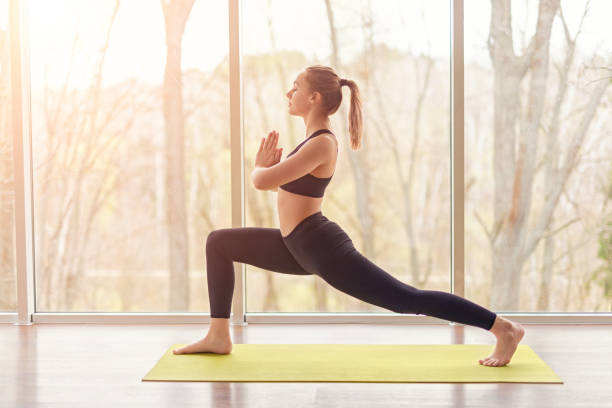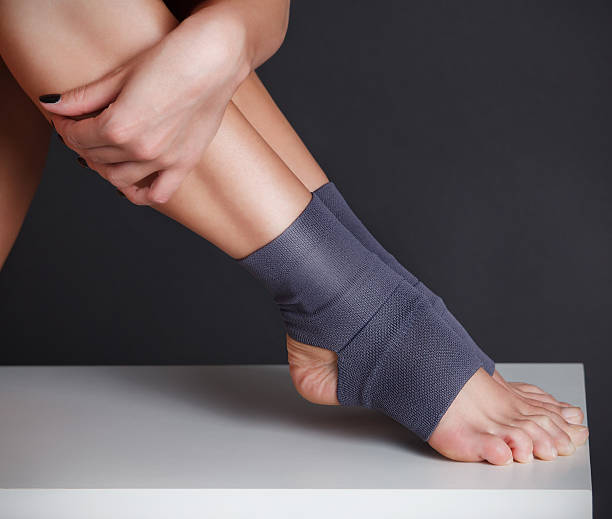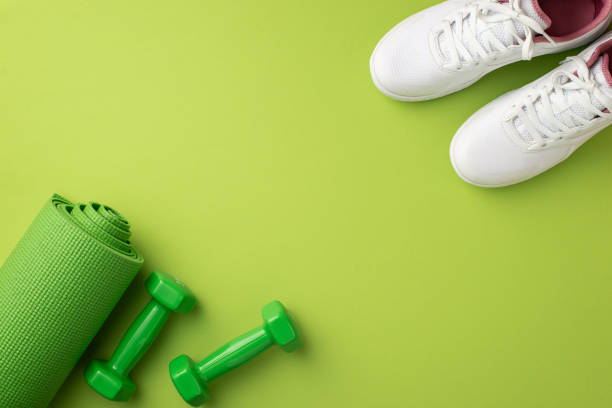Yoga has become an increasingly popular way to improve flexibility, build strength, reduce stress, and connect with your inner self. As a yoga beginner, you may be wondering what shoes you should wear to class. Should you go barefoot? Wear sneakers? Or invest in special yoga footwear? This comprehensive guide will walk you through the pros and cons of different yoga shoe options so you can make an informed decision.
Can You Wear Shoes to Yoga?
Most yoga studios allow students to wear shoes, especially if they have a foot injury or condition that calls for extra support and cushioning. However, the preference is typically to practice barefoot in order to reap the full benefits of poses.Wearing regular street shoes into the studio is not a good idea, as you’ll track in dirt and contaminants. If your studio requires removing shoes in the lobby, come prepared with clean socks or yoga shoes to change into. Certain styles like hot yoga may have more flexible shoe policies.No matter what footwear you choose, look for thin, flexible soles to allow proper alignment and avoid restricting movement. Break shoes in before class to prevent discomfort.

What Shoes Do You Wear to Yoga?
If you decide to wear shoes for yoga, look for a style designed specifically for yoga, not running or other athletic shoes. Features to look for include:
- Thin, flexible rubber soles to allow feet to move and feel the floor
- Lightweight materials like mesh for breathability
- Gripped soles and footbeds to prevent sliding
- Secure but adjustable straps across the top of the foot
Popular styles of yoga shoes include:
- Yoga sneakers that look like athletic shoes but are designed for yoga’s unique movements
- Yoga sandals with straps across the top of the foot
- Yoga slip-ons that wrap across the top of the foot
- Toe-separator shoes that allow more freedom of motion between the toes
Try on several options to find the most comfortable and supportive yoga shoes for your needs.
What Are the Benefits of Wearing Yoga Shoes?
Wearing proper footwear to yoga class provides:
- Traction – Rubber soles prevent sliding on the mat during balancing poses or inversions.
- Support – Shoes with cushioning and arch support reduce strain on feet and joints.
- Comfort – Padding and secure fits prevent discomfort from hard studio floors.
- Hygiene – Shoes act as a barrier against bacteria and dirt on rental mats.
- Safety – Yoga shoes provide stability, preventing rolled ankles or slips during challenging postures.
- Warmth – Insulated, covered shoes keep feet cozy during early morning or heated classes.
If you have any foot issues like plantar fasciitis, bunions, or arthritis, yoga shoes can be a great choice to enable you to practice comfortably.
What to Consider When Selecting Yoga Shoes
Choosing the right yoga shoes involves evaluating your needs:
- Yoga style – Consider more supportive shoes for heated, high-intensity flows versus barefoot for relaxing Yin.
- Foot issues – Those with sensitivities may need more coverage and arch reinforcement.
- Sweat – Breathable mesh prevents moisture build-up during hot yoga.
- Toe comfort – Do you need room to spread toes or do constricting shoes cause discomfort?
- Size and fit – The shoes shouldn’t pinch or be uncomfortably loose, especially during inversions.
- Budget – Determine how much you can spend.
Can You Barefoot to Yoga?
Barefoot yoga helps improve balance and stability by forcing you to use your feet and engage the small stabilizing muscles in the feet and ankles. Additionally, being barefoot allows you to fully flex and point your feet, spread your toes, and articulate your ankles without any restriction from shoes. This greater freedom of motion lets you more deeply move into poses that require foot flexibility, like downward dog, warrior poses, or wide-legged folds.For these reasons, practicing yoga barefoot enables deeper stretches, better stability, and more mind-body awareness, regardless of your activity level. The sensory feedback from the floor helps you adjust your alignment and feel grounded during meditation. Over time, yoga barefoot can even relieve foot pain and pronation issues by strengthening the arches and muscles of the feet.

What Are the Benefits of Barefoot to Yoga?
Practicing yoga with bare feet has some notable upsides:
- Enhanced grip – Bare feet can grip the mat better, especially during balancing poses.
- Flexibility – Feet can spread and move without restrictive shoes.
- Balance – You develop greater stability when barefoot.
- Mind-body connection – Feet provide feedback about alignment and technique.
- Comfort – No squeezing, pinching, or chafing from shoes.
- Freedom – Bare feet allow for a wider range of motion.
- Grounding – Direct skin-to-floor contact keeps you present.
- Strength training – Feet and arches work harder without shoes.
For those without injuries or sensitivities, yoga barefoot could take your practice to the next level. But test it out cautiously as your body adapts.
Do You Wear Yoga Socks to Yoga Class?
For beginners who feel uncomfortable going completely barefoot in a public yoga class, a pair of yoga socks are a great alternative. Yoga socks come with non-slip grips on the soles and sometimes toe separators. This provides traction while keeping feet protected and warm.Look for yoga socks that have individual toes, as opposed to a closed toe sock. This allows your toes to move and spread naturally. The sockets also prevent blisters between the toes that can form with bare feet. Yoga socks are cheap, hygienic, and easy to throw in your yoga bag.

What Are the Benefits of Yoga Socks?
Wearing yoga socks to class provides many perks:
- Grip – Non-slip socks prevent sliding on the mat, allowing stability in poses.
- Toe dexterity – Toe socks encourage movement and spread of toes.
- Warmth – Cozy layered cotton/wool socks keep feet from getting cold during practice.
- Barrier – A layer of protection from rental mat germs and studio dirt.
- Comfort – Extra padding cushions bare feet against hard floors.
- Style – Fun patterns and colors allow you to showcase your personality.
- Affordability – Inexpensive way to experiment with yoga footwear.
- Convenience – Easy to pack in your yoga bag and slip on at start of class.
Shoes, Barefoot, or Socks: Which Is Best?
When it comes to yoga, is it best to wear shoes, go barefoot, or wear socks? There is no universally “right” answer—the optimal footwear depends on your specific needs and preferences.
| Option | Advantages | Disadvantages |
| Shoes | Supportive for those with foot issuesProvides warmth in cold studiosGripped soles prevent slidingProtection for feet from unclean mats | Can restrict flexibility & articulation of ankles/toesReduces mind-body awarenessNeed to find shoes specifically designed for yoga |
| Barefoot | Better balance & stabilityFull flexion & articulation of feetGreater sensory feedback & mind-body connectionDevelops arch & foot muscles | Cold studios can be uncomfortableRisk of slipping without gripPotential hygiene concerns in public spaces |
| Socks | Warmth for feetGrips provide tractionToe socks allow flexibilityHygienic & affordableLight padding for sensitive feet | Lack arch & ankle supportMinimal cushioningCan slip off during practiceNeed to find socks specifically for yoga |
Will shoes limit my stability or flexibility during yoga?
Poorly designed shoes may restrict stability and flexibility. Look for thin, flexible soles that mimic bare feet and prioritize minimalist athletic or slip-on styles over running shoes. Let shoes break in fully before stretching during yoga class. Remove shoes during poses requiring toe dexterity.

What features should I look for in yoga shoes as a beginner?
Ideal features for beginner yoga shoes include thin, non-slip soles, breathable stretchy fabrics, adjustable straps for a secure fit, lightweight construction and smooth flat soles that allow toes to spread. When searching for the perfect pair of yoga shoes, it’s important to avoid heavy, inflexible shoes with thick cushioning. Additionally, it’s worth considering shoes made from natural rubber for their eco-friendly and sustainable properties.
Conclusion
Finding the right footwear for yoga involves balancing traction, stability, alignment, comfort and foot protection. Most yogis recommend starting barefoot to experience the full benefits, then adding socks or thin yoga shoes as needed for hygiene and light support. Listen to what feels right for your feet rather than trends. Let comfort guide you towards the shoes, socks or barefoot practice that serves your yoga journey. Reach us today for more yoga products.

